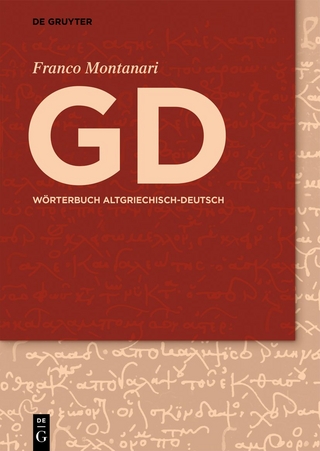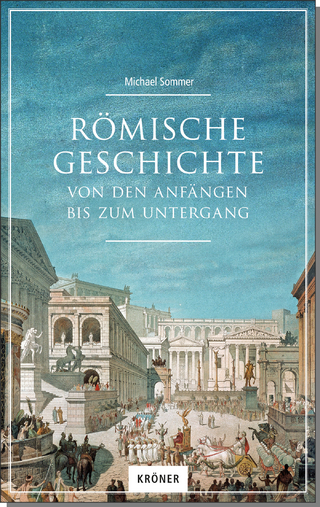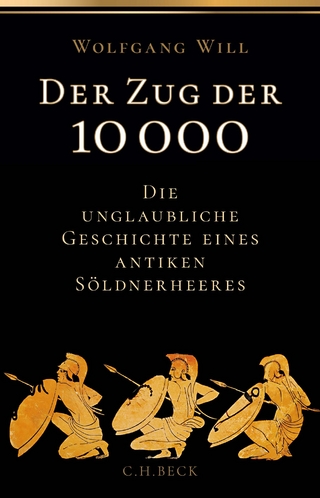
World Archaeo-Geophysics
Springer International Publishing (Verlag)
978-3-031-57899-1 (ISBN)
- Noch nicht erschienen - erscheint am 31.07.2024
- Versandkostenfrei innerhalb Deutschlands
- Auch auf Rechnung
- Verfügbarkeit in der Filiale vor Ort prüfen
- Artikel merken
This open access volume showcases the intersection of geophysics and archaeology on a global scale, emphasising the evolution and application of geophysical methods in archaeological research and cultural heritage management. It compiles contributions from 74 experts based in 18 countries, with their research and case studies spanning across 24 different countries, focusing on the use of near-surface geophysical techniques and their integration with soil analyses and other methods to enrich archaeological interpretations. Prepared under the auspices of the collaborative network fostered by COST Action SAGA - CA17131, this work navigates through the successes and challenges encountered in the widespread adoption of archaeo-geophysical methods across diverse geographic and cultural landscapes. It offers a comprehensive chronicle of the genesis, maturation, and cutting-edge advancements in geophysical techniques, advocating for their amplified integration within the archaeological community. Incorporating an array of case studies and critical discussions on methodological and interpretive questions, the book underscores the importance of multidisciplinary collaboration, and defines perspectives for innovation and growth within the field. As an open-access work, 'WORLD ARCHAEO-GEOPHYSICS' aims to contribute to the democratisation of knowledge, fostering shared learning and cooperative engagement among professionals, academics, students and archaeology enthusiasts alike. Funded by the European Cooperation in Science and Technology (COST) and supported by the Norwegian University of Science and Technology (NTNU), this volume stands as a legacy of the resilient spirit of collaboration that defined the COST Action SAGA community, even in the face of pandemic challenges. It invites the academic and professional community to engage in new explorations and advancements, positioning itself as a reference for current and future endeavors in archaeo-geophysics.
Dr. Carmen Cuenca-García is a Distinguished Researcher (CIDEGENT) at the University of Valencia (UV) and holds a research affiliation with the Norwegian University of Science and Technology (NTNU). Her career in archaeology began at the UV (Spain, 1993-1998), followed by seven years dedicated to rescue archaeology in Spain and the UK. Her commitment to geophysical prospection began with an MSc from Bradford University (England, 2007-2008), followed by a PhD from the University of Glasgow (Scotland, 2009-2013). Her professional pathway has been marked by research and consultancy positions in Greece (FORTH-IMS, Rethymno-Crete, 2013-2015), Austria (Comprehensive Nuclear-Test-Ban Treaty Organization-CTBTO, Vienna, 2015-2016), and Norway (NTNU, Trondheim, 2017-2023). Her interdisciplinary research, spanning archaeology, applied geophysics, and geosciences, underscores the critical role of geophysical methods in archaeology and heritage management. She specialises in usinggeophysical techniques for the non-invasive discovery, mapping, and characterisation of archaeological sites and paleo-environments. A particular focus of her work has been on the development of field methods, incorporating soil/deposits characterisation into archaeo-geophysical investigations to yield more detailed interpretations. Her extensive fieldwork encompasses a variety of archaeological sites from different eras across Scotland, Greece, Cyprus, Spain, Norway, and Estonia, contributing to the development of a rich portfolio of scientific publications, reports, and dissemination materials. Dr. Cuenca-García has successfully led several projects won through national and international competitive calls, notably coordinating the COST Action SAGA. This project, which rallied 115 experts to refine the use of geophysical and soil analytical methods in archaeology, achieved significant progress despite pandemic-related challenges. Over four years, it facilitated scientific collaboration through meetings, training events, conferences, and research missions, producing 53 scientific publications, 15 research proposals, and notably, the SAGA Database. This database, which catalogues research infrastructures and methodologies, enhances equipment sharing and fosters collaboration among researchers. Actively engaged in the academic and research community, she serves on scientific panels and conference committees, performs reviews and editorial work for international journals, and dedicates herself to teaching and mentoring.
Dr. Andrei Asandulesei is a Senior Researcher/Archaeologist at the Institute of Interdisciplinary Research (ICI) with expertise in the area of prehistoric archaeology. His main responsibilities include non-invasive geophysical prospection, aerial photography, LiDAR/TLS interpretation and GIS applications in archaeology. He is closely interested in the analysis of the ancient human settling patters and internal spatial organisations ofsettlements in order to better understand the interdependence relation between communities and the environment. He has received several scholarships abroad, as part of international multi-institutional research teams from Germany, Austria, France, and Australia, in which he had the possibility to conduct non-invasive field surveys in Kurdistan, Iraq, Azerbaijan, Georgia, Caucasus, Russia, Germany, and the R. Moldova. As project manager, he has coordinated two national grants: "Non-destructive approaches to complex archaeological sites. An integrated applied research model for cultural heritage management (2014-2017)" and "Settling Selection Patterns and Settlement Layout Development in the Chalcolithic Cucuteni Culture of Northeastern Romania (2020-2022)". His contributions are reflected in articles, studies, books and book chapters, participation and organisation of conferences, etc.
Dr. Kelsey M. Lowe is a Principal Heritage Consultant/Archaeologist in Brisbane,Australia.
Chapter 1. Has anything changed? The current role of archaeo-geophysics in Australian archaeological research and cultural heritage management (Lowe and Moffat).- Chapter 2. The application of geophysical survey in archaeological research in Belgium: current state and future perspectives (Verhegge et al).- Chapter 3. Synergy of environmental magnetism and archaeomagnetism for the benefit of archaeology - state of the art in Bulgaria (Jordanova et al).- Chapter 4. Archaeo-geophysics in China - A historical perspective (Zhao and Wang).- Chapter 5. Sensing the Cultural Heritage from above. The Case from Cyprus (Vella et al).- Chapter 6. A review of the development and current role of ground-based geophysical methods for archaeological prospection in Scandinavia (Stamnes et al).- Chapter 7. Geophysical prospecting in Egypt: an overview (Herbich).- Chapter 8. On a Commercial Scale: Archaeological Geophysics in England (Parker et al).- Chapter 9. Variety in archaeo-geophysics: the French example (Thiesson et al).- Chapter 10. Geophysical prospecting on soils in Mesopotamia: From mega-cities in the marches of southern Iraq to Assyrian sites in the mountains of Kurdistan (Fassbinder et al).- Chapter 11. Recent soil study research in Irish archaeological prospection strategies (Bonsall).- Chapter 12. Integrated archaeological prospection studies in Mexico: a review (Blancas et al).- Chapter 13. Looking through Earth: Archaeo-Geophysics and Soil Science in the Republic of Moldova (Ba et al).- Chapter 14. The state of archaeo-geophysics in the Maghrib: case studies from Tunisia and Morocco (Jrad et al).- Chapter 15. Back to the roots. Ablest prospection techniques for rediscovering the Chalcolithic settlement of Cucuteni - Ceta uie, Romania: a short retrospective, novel recent data, prospects for the future (Asandulesei).- Chapter 16. Geophysical survey in the archaeology of Scotland: recent developments and results (Jones).- Chapter 17. The place of archaeo-geophysics in archaeological and cultural heritage site investigations in Turkey (Drahor and Berge).- Chapter 18. Geophysical survey in support of archaeological rescue excavations at industrial area of Kremenchuk magnetic anomaly in Ukraine (Bondar et al).
| Erscheint lt. Verlag | 31.7.2024 |
|---|---|
| Reihe/Serie | One World Archaeology |
| Zusatzinfo | Approx. 490 p. 133 illus., 118 illus. in color. |
| Verlagsort | Cham |
| Sprache | englisch |
| Maße | 155 x 235 mm |
| Themenwelt | Geisteswissenschaften ► Archäologie |
| Geschichte ► Allgemeine Geschichte ► Altertum / Antike | |
| Geisteswissenschaften ► Geschichte ► Hilfswissenschaften | |
| Sozialwissenschaften | |
| Schlagworte | archaeo-geophysics • archaeogeophysics • archaeogeophysics in China • Archaeological geophysics • Archaeological research • archaeology • CH management • COST Action SAGA (CA17131) • Cultural Heritage Management • cultural sediments • development-led archaeology • digital • geoarchaeology • geophysical archaeology in the US • geophysical survey • Geophysics • Landscapes • metallurgical sites • near-surface geophysics • Non-destructive • non-invasive • open access • Paleolandscapes • prospection • Remote Sensing • Soil |
| ISBN-10 | 3-031-57899-6 / 3031578996 |
| ISBN-13 | 978-3-031-57899-1 / 9783031578991 |
| Zustand | Neuware |
| Haben Sie eine Frage zum Produkt? |
aus dem Bereich


